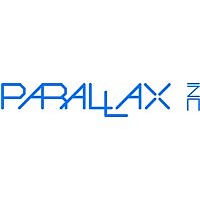SX18AC/SO Parallax Inc, SX18AC/SO Datasheet - Page 27

SX18AC/SO
Manufacturer Part Number
SX18AC/SO
Description
IC MCU 2K FLASH 50MHZ SO-18
Manufacturer
Parallax Inc
Series
SXr
Datasheet
1.SX18ACSO.pdf
(43 pages)
Specifications of SX18AC/SO
Core Processor
RISC
Core Size
8-Bit
Speed
50MHz
Number Of I /o
12
Program Memory Size
3KB (2K x 12)
Program Memory Type
FLASH
Ram Size
137 x 8
Oscillator Type
Internal
Operating Temperature
0°C ~ 70°C
Package / Case
18-SOIC
Voltage - Supply (vcc/vdd)
-
Eeprom Size
-
Data Converters
-
Peripherals
-
Connectivity
-
15.0 INSTRUCTION SET
As mentioned earlier, the SX family of devices uses a
modified Harvard architecture with memory-mapped
input/output. The device also has a RISC type architec-
ture in that there are 43 single-word basic instructions.
The instruction set contains byte-oriented file register, bit-
oriented file register, and literal/control instructions.
Working register W is one of the CPU registers, which
serves as a pseudo accumulator. It is a pseudo accumu-
lator in a sense that it holds the second operand,
receives the literal in the immediate type instructions, and
also can be program-selected as the destination register.
The bank of 31 file registers can also serve as the pri-
mary accumulators, but they represent the first operand
and may be program-selected as the destination regis-
ters.
15.1 Instruction Set Features
1. All single-word (12-bit) instructions for compact code
2. All instructions are single cycle except the jump type in-
3. A set of File registers can be addressed directly or indi-
4. Many instructions include a destination bit which se-
5. Bit manipulation instructions (Set, Clear, Test and Skip
6. STATUS Word register memory-mapped as a register
7. Program Counter (PC) memory-mapped as register file
8. Indirect addressing data pointer FSR (file select regis-
9. IREAD instruction allows reading the instruction from
10.Eight-level, 11-bit push/pop hardware stack for sub-
11.Six addressing modes provide great flexibility.
15.2 Instruction Execution
An instruction goes through a four-stage pipeline to be
executed (Figure 15-1). The first instruction is fetched
from the program memory on the first clock cycle. On the
second clock cycle, the first instruction is decoded and
the second instruction is fetched. On the third clock cycle,
the first instruction is executed, the second instruction is
decoded, and the third instruction is fetched. On the
fourth clock cycle, the first instruction’s results are written
to its destination, the second instruction is executed, the
© 1998 Scenix Semiconductor, Inc. All rights reserved.
efficiency.
structions (JMP, CALL) and failed test instructions
(DECSZ fr, INCSZ fr, SB bit, SNB bit), which are two-
cycle.
rectly, and serve as accumulators to provide first oper-
and; W register provides the second operand.
lects either the register file or the accumulator as the
destination for the result.
if Set, Test and Skip if Clear).
file, allowing testing of status bits (carry, digit carry, ze-
ro, power down, and timeout).
allows W to be used as offset register for indirect ad-
dressing of program memory.
ter) memory-mapped as a register file.
the program memory addressed by W and upper four
bits of MODE register.
routine linkage using the Call and Return instructions.
- 27 -
third instruction is decoded, and the fourth instruction is
fetched. Once the pipeline is full, instructions are exe-
cuted at the rate of one per clock cycle.
Instructions that directly affect the contents of the pro-
gram counter (such as jumps and calls) require that the
pipeline be cleared and subsequently refilled. Therefore,
these instruction take more than one clock cycle.
The instruction execution time is derived by dividing the
oscillator frequency by either one (turbo mode) or four
(non-turbo mode). The divide-by factor is selected
through the FUSE Word register.
15.3 Addressing Modes
The device support the following addressing modes:
Both direct and indirect addressing modes are available.
The INDF register, though physically not implemented, is
used in conjunction with the indirect data pointer (FSR) to
perform indirect addressing. An instruction using INDF as
its operand field actually performs the operation on the
register pointed by the contents of the FSR. Conse-
quently, processing two multiple-byte operands requires
alternate loading of the operand addresses into the FSR
pointer as the multiple byte data fields are processed.
Examples:
Direct addressing:
Indirect Addressing:
Fetch
Data Direct
Data Indirect
Immediate
Program Direct
Program Indirect
Relative
mov
mov
mov
Clock
Cycle
1
Figure 15-1.
FSR,#RA
INDF,#$01
RA,#01
Decode
Clock
Cycle
Pipeline and Clock Scheme
1
Execute
SX18AC / SX20AC / SX28AC
;move “1” to RA
;FSR = address of RA
;move “1” to RA
Clock
Cycle
1
www.scenix.com
Write
Clock
Cycle
1


















